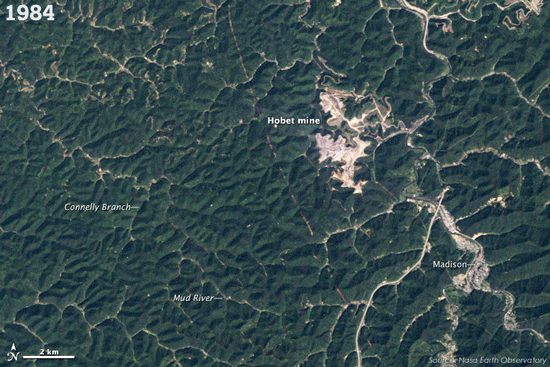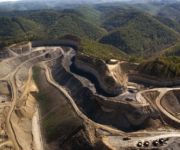
This series of photographs from NASA's Landsat 5 satellite, taken over 26 years from 1984 to 2010, shows the toll mountaintop-removal mining takes on a landscape. You can watch the bombed-out area expand, and see that the "restored" scars never look quite the same.
For a close-up look at the effects of mountaintop removal mining, there's The New York Times article on Lindytown, bought out and turned into a ghost town by Massey Energy, which didn't want people living too near its MR operations. (People didn't much want to live there, either, once the mining started — former residents describe a town blanketed with thick dust and "fly rock" from the explosions.)
[T]he coal that helped to create Lindytown also destroyed it. Here was the church; here was its steeple; now it’s all gone, along with its people. Gone, too, are the surrounding mountaintops. To mine the soft rock that we burn to help power our light bulbs, our laptops, our way of life, heavy equipment has stripped away the trees, the soil, the rock — what coal companies call the “overburden.”
Now, the faint, mechanical beeps and grinds from above are all that disturb the Lindytown quiet, save for the occasional, seam-splintering blast.
Between that and the panoramic view, you get the whole ugly picture.




